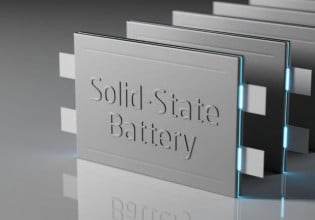Schottky Rectifiers Deliver Power Density in Compact Package
The multipurpose rectifiers achieved the industry’s highest current densities while being the smallest in their class.
In modern power electronics, power-dense and compact components are essential for miniaturizing power converters. As technologies advance, voltage and current requirements continue to rise while the desired form factor of electronic devices reduces. This necessitates the development of compact yet efficient components capable of handling higher power levels within limited onboard space.
Diodes Incorporated has introduced a trio of 2 A Schottky rectifiers with impressive electrical properties and compact form factors. This article examines Schottky rectifier performance metrics and explores how Diodes Incorporated’s innovation promises to provide a solution.
Diodes Incorporated’s compact Schottky rectifier. Image used courtesy of Diodes Incorporated
Exploring Schottky Rectifier Performance Metrics
Schottky rectifiers are critical components in power converter design. Unlike conventional diode rectifiers, which utilize P-N junctions, Schottky rectifiers employ metal-semiconductor junctions. Several key parameters influence the devices’ performance.
The forward voltage drop effect refers to the voltage across the rectifier during forward conduction. A lower forward voltage drop reduces power losses and enhances efficiency. The thermal resistance of a rectifier describes the rectifier’s ability to dissipate heat. Higher thermal resistance increases temperature rise during operation, affecting device reliability at high temperature and power. Additionally, the avalanche capability determines the rectifier's ability to withstand transient overvoltage without breakdown. A higher avalanche capability enhances the rectifier's robustness and reliability in high-power applications.
Fully bridge rectifier circuit. Image used courtesy of Tasneem et al.
Besides these parameters, space constraints pose challenges across many engineering disciplines. For example, in fields like aerospace, the weight of electronics can affect the aerodynamic performance of aircraft, the cost of a payload, and the range of the mission. Achieving device miniaturization without compromising on electrical characteristics is, therefore, a significant challenge. For this reason, optimizing electrical parameters while ensuring a compact form factor is crucial for maximizing the performance and efficiency of Schottky rectifiers in modern power conversion applications.
Shrinking Power Electronics Solutions
Diodes Incorporated recently launched the industry's first 2A Schottky rectifiers, setting a new power density standard.
These rectifiers, available in the DSN1406 package, include the SDT2U30CP3 (30 V/2 A), SDT2U40CP3 (40 V/2 A), and SDT2U60CP3 (60 V/2 A). Housed in a chip-scale package (CSP) occupying only 0.84 mm² of board space, they serve various functions such as blocking or reverse-polarity protection diodes, boost diodes, and switching diodes. With a maximum ultra-low forward voltage of 580 mV and improved avalanche capability, these rectifiers are said to enable higher-efficiency system design.
Package dimensions of SDT2U30CP3. Image courtesy of Diodes Incorporated
According to the company, these three rectifiers represent the industry's first 2 A trench Schottky models designed for the X3-DSN1406-2 package, making them the smallest in their category. Compared to similar surface-mount block devices, they occupy just 3.4% of the PCB area. The trio can operate from -55oC to 150oC. With a typical profile of 0.25 mm, these ultra-thin CSPs also reduce thermal paths, enhancing power dissipation and lowering thermal bill-of-materials costs while significantly improving overall system reliability.
Small Size, Big Impact
The SDT2U30CP3, SDT2U40CP3, and SDT2U60CP3 rectifiers are available at prices of $0.16, $0.17, and $0.19 per unit, respectively, for orders of 2,500 pieces. With unprecedented current densities, minimal voltage drop, and robust thermal resistance, these rectifiers could raise the bar for the industry.









